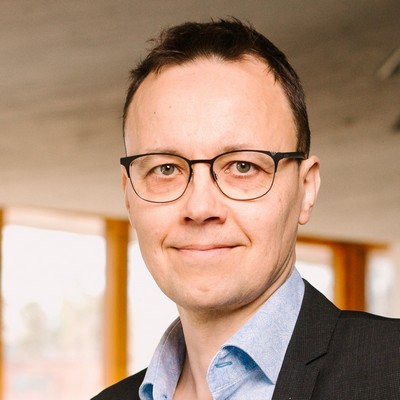- 8:00–9:00 Registration
- 9:00–17:00 PhD Workshop
- 17:00–20:00 Registration
- 18:00–20:00 Welcome drink
- registration possible
- 8:00–9:00 Registration
- 9:00–9:15 Welcoming (Hall 1)
- 9:15–10:15 Keynote lecture (Hall 1)
- Data acquisition from pedestrian experiments
Maik Boltes - + Collective Dynamics 10th anniversary announcement
- 10:15–10:45 Coffee break
- 12:05–13:05 Lunch
- 14:25–14:30 Coffee break (continues during Poster session)
- 14:30–15:30 Poster session
- Odd numbers
|
|
|
Mira Küpper and Juliane Adrian |
Takahiro Matsunaga and Eiji Hato |
Jiawei Zhang, Sakurako Tanida, Xiaolu Jia, Claudio Feliciani, Daichi Yanagisawa and Katsuhiro Nishinari |
Álvaro Serrano, Giuseppe Vizzari and Marin Lujak |
Xintong Li, Weiguo Song, Jun Zhang and Nikolai Bode |
Celine Finet, Jean-Bernard Hayet, Ioannis Karamouzas and Julien Pettre |
- 19:00–21:00 Social event
- 9:05–9:15 Short info (Hall 1)
- 9:15–10:15 Keynote lecture (Hall 1)
- Bridging Physics and AI: Learning Pedestrian Dynamics from Video Data
He Wang
- 10:15–10:45 Coffee break + Group photo
- 12:05–13:05 Lunch
- 14:25–14:30 Coffee break (continues during Poster session)
- 14:30–15:30 Poster session
- Even numbers
- 15:30–16:30 Controlled experiments - obstacles and slow walkers (Hall 2)
- 15:30–16:30 Modeling of pedestrian formations (Hall 3)
- 39. Specific flow rate at openings for pedestrians including slow walkers
Kenichi Takayama and Tomoaki Nishino - 42. Self-organisation in pedestrian dynamics simulation: a stochastic port-Hamiltonian approach
Rafay Nawaid Alvi, Barbara Rüdiger and Antoine Tordeux - 40. Mixed-Age Pedestrian Dynamics and Obstacle Avoidance Behaviors: An Experimental Analysis
Jiaming Liu, Hui Zhang and Majid Sarvi - 43. "Valency" model of pedestrian group behaviour
Francesco Zanlungo and Zeynep Yucel - 41. Experimental analysis of firefighters crossing multiple obstacles under smoke and heat environment
Yixi Tao, Xuehua Song, Hang Yu, Weiguo Song and Jun Zhang - 44. Modeling metastable dynamics of dyads from large-scale data
Chiel van der Laan, Tom Harmsen and Alessandro Corbetta
- 16:30–17:30 Steering committee meeting (Room A-1435)
- 19:00–22:00 Conference dinner
- 9:05–9:15 Short info (Hall 1)
- 9:15–10:15 Keynote lecture (Hall 1)
- Coupling the fire and evacuation simulations – needs, challenges and possibilities
Simo Hostikka
- 10:15–10:45 Coffee break
- 10:45–12:05 Controlled experiments – design (Hall 2)
- 10:45–12:05 Case study simulations (Hall 3)
- 45. Emergence of motion synchronization in pedestrian crowds
Yi Ma, Meng Shi, Eric Lee and Richard Yuen - 49. Evacuation simulations accounting for properties of the blended wing body aircraft
Yuming Dong, Xiaolu Jia, Daichi Yanagisawa and Katsuhiro Nishinari - 46. Density Dependent Gait Patterns in Crowds
Carina Wings, Maik Boltes and Uwe G. Kersting - 50. Wildfire Evacuation Modelling of Tourist Campsites
Borja Darnaculleta, Enrico Ronchi, Amina Labhiri, Virginie Dréan, Bruno Guillaume and Eric Guillaume - 47. Single-file pedestrian flows with free density
Cecile Appert-Rolland and Julien Pettre - 51.The Lecture Hall Example as a Reference for Evacuation Simulations – An Updated Study
Angelika Kneidl, Burkhard Forell, Gerald Grewolls, Rainer Koennecke, Andreas Winkens and Tim Meyer-König - 48. Balancing Data Needs in Pedestrian Dynamics Experiments: Crowd Size, Number of Trials, and Trial Duration
Max Kinateder, Paul Geoerg and Nikolai Bode - 52. How does the computational speed of pedestrian models depend on the characteristics of the simulated scenario?
Martijn Sparnaaij, Dorine Duives and Serge Hoogendoorn
- 12:05–13:05 Lunch
- 14:25–15:00 Closing (Hall 1)
- 15:00–16:00 Farewell drink
PhD Workshop
Topic: Data acquisition from pedestrian experiments
Content: Practical seminars in PC labs focusing on pedestrian experiments and pedestrian recognition and tracking.
More details in Workshop page.
Number of attendees is limited with priority of PhD students.
Keynote Speakers

Empirical data is the basis for studying and thus understanding the dynamics inside crowds, which could increase safety and comfort for pedestrians as well as the performance of pedestrian facilities. The results enable the development of models reflecting the real dynamics. Controlled reproducible experiments allow the quantitative description of pedestrian dynamics by investigating influencing aspects and enable the analysis of selected parameters under well-defined constant conditions. Data of these experiments has to be collected by appropriately selected and utilized sensors.
In my presentation, I will address the implementation of laboratory experiments, with a particular focus on the collection of experimental data. I will discuss both the opportunities and limitations of various data collection techniques and methods, as well as their practical applications. The fusion of carefully calibrated and synchronized data enables the correlation of different influencing factors. Linking individual characteristics to specific subjects within a dataset makes it possible to analyze the impact of personal attributes on the specific dynamics. The use of standardized methods for data acquisition, measurement, and storing data significantly enhances the comparability of experimental results. Furthermore, the availability of open data and open-source software is essential for ensuring the reproducibility of findings and for facilitating the reuse of the often laboriously collected experimental datasets. These aspects will also be explored in my presentation.

Understanding pedestrian and crowd movements is a crucial challenge spanning multiple disciplines, from mathematics, physics, and computer science to public safety, event planning, policymaking, and psychology. Decades of research have provided valuable insights and powerful analytical tools, and since 2016, deep learning has emerged as a transformative force in this field. In this talk, I will introduce our latest research on pedestrian dynamics within the deep learning landscape. Moving beyond traditional explicit models and black-box AI, a new trend has gained momentum since 2022—integrating physics-based models with deep neural networks. This hybrid approach enhances predictive accuracy, improves explainability, and strengthens generalization, paving the way for a deeper understanding of complex human movement patterns.

Fire and evacuation simulations are often conducted as part of a building’s design process to ensure that occupants can evacuate or be rescued in the event of a fire, or as part of a fire investigation to assess the conditions and timing of a past incident. Despite the clear interdependence between fire development and evacuation processes, these simulations are usually performed independently. This presentation will discuss the reasons for and extent to which these simulations should be coupled, the technical challenges involved, and development opportunities to support practitioners in analyzing scenarios that account for the interactions between fire and human behavior.
Key motivations for coupling fire and evacuation simulations include the need to evaluate potential toxic effects and reduced visibility due to smoke, which is often modeled through walking speed reduction. Wayfinding difficulties are typically addressed by applying scenario- and location-specific visibility thresholds. The adequacy of using visibility as a surrogate for irritation will be examined in light of literature data. Beyond wayfinding as a physical task, efforts have been made to predict evacuees’ decision-making processes; however, these methods have not yet matured into practical applications. Recently, increasing interest in wildfire evacuation has reignited this topic. In building fires, two-way coupling may also be necessary, as evacuee decisions could influence fire development.
Recent advancements in fire toxicity modeling have revealed that limitations in transferring toxicity data can lead to underestimated risks and non-conservative designs. This presentation proposes an approach to improve both the accuracy and computational efficiency of toxicity coupling by using effective surrogate species and optimizing the selection of transferred quantities. The potential role of Building Information Modeling (BIM) standardization in supporting these improvements will also be briefly discussed.
